THE ART OF ACTING: FILM ACTRESSES & GLOBAL CLASSICS
My reflections on actresses and their most compelling performances in (mostly) classics of global cinema

Catherine Deneuve – Tristana | Repulsion | Belle de Jour
CATHERINE DENEUVE ACTRESS, PART 2 OF 4: REPULSION (ROMAN POLANSKI)
Richard Jonathan
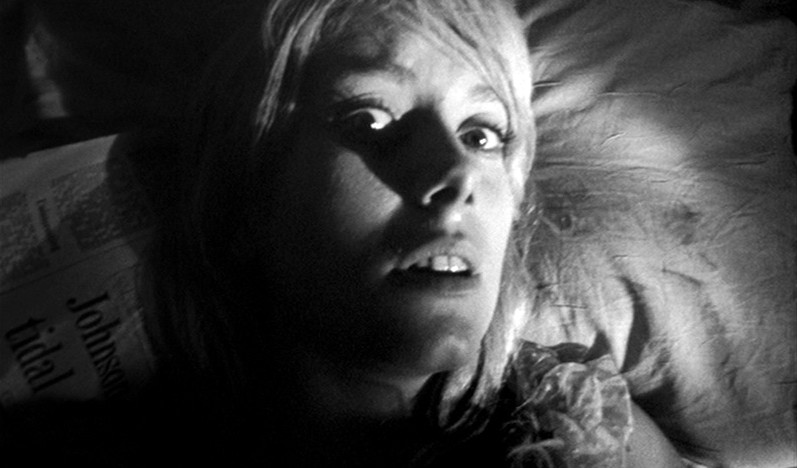
Catherine Deneuve, Repulsion, Roman Polanski
In Repulsion, Catherine Deneuve plays Carole Ledoux, a young woman terrified of her own desire, unable to integrate her sexuality into her self-experience, let alone into a relationship with a man (or woman, for that matter). Why? We don’t know: Repulsion is a work of art, not a clinical case (Carole is not another Marnie). And it is precisely because we don’t know that Carole’s subjective viewpoint in the film is so effective: Not given any clue (except for a single family photo), we are thrown back upon ourselves; we then sense, somewhere in our buried past, that for us too sex was—at least potentially—a trauma. While none of us, no doubt, could imagine the fear of sex leading us to madness and murder, we can nevertheless feel that Carole is not alien to us. This, then, is the challenge Deneuve faced in playing Carole: to convey the humanity of a ‘psychotic’, to restore the link with us that the ‘schizophrenic’ has ruptured. This she accomplishes brilliantly.
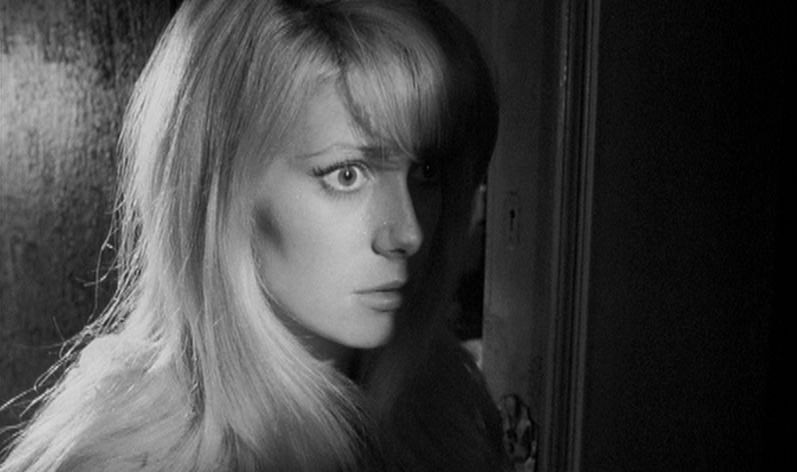
Catherine Deneuve, Repulsion, Roman Polanski
Incidentally, two very fine studies of schizophrenia, if that dimension of Repulsion interests you, are Wilfried Ver Eecke and Alphonse De Waelhens, Phenomenology and Lacan on Schizophrenia, after the Decade of the Brain (Leuven University Press, 2001) and Chrisotopher Bollas, When the Sun Bursts: The Enigma of Schizophrenia (Yale University Press, 2017).

The photo on the mantelpiece of young Carole Ledoux and her family | Repulsion, Roman Polanski
Deneuve was twenty-one when making Repulsion. In the audio commentary to the Criterion DVD of the film she says: ‘The fact that I was very shy and very young—the age of the character—helped the credibility of the actress. I think in Repulsion I look very romantic and very wild [‘wild’ is her rendering of the French ‘sauvage’, which in this context means ‘introverted’, ‘withdrawn’, ‘shy’] and that is not something Roman could have asked me to play, that is the way I was and the way he used me.’ Polanski, for his part, says: ‘Catherine was somebody I knew in Paris. A very quiet girl, with quite a sense of humour.’ And in one of the interviews he gave upon the release of the film, he said: ‘She looks like a professional virgin, but sexy’. Both physically and in terms of temperament, then, there were certain points of correspondence between the woman, the actress and the role.
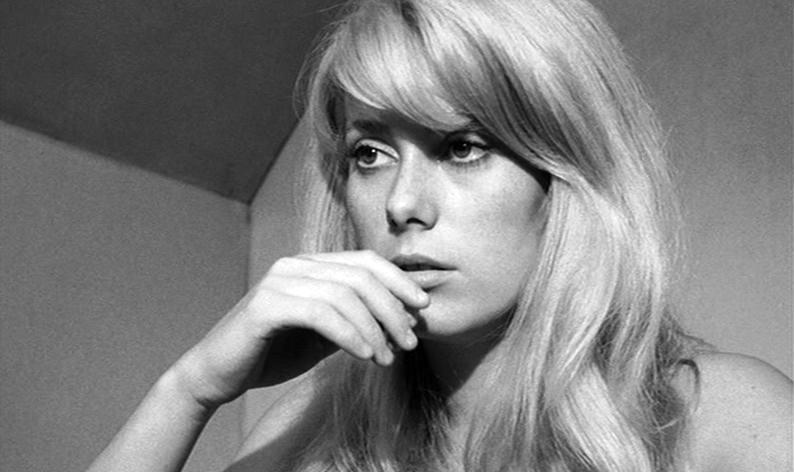
Catherine Deneuve, Repulsion, Roman Polanski
In another ‘bonus’ on the Criterion DVD, we see Polanski directing Deneuve on set (a French TV station filmed part of a day’s shooting), and the discussion between director and actress concerns how to render Carole’s madness. Here Polanski—a man with cinema flowing through his veins and an accomplished actor to boot—gives Deneuve a vocabulary of gesture, movement and gaze that she would modulate to render the precise degree of Carole’s sexual panic at any given moment in the narrative. Note, in passing, that Carole’s panic is always triggered by something concrete—the sight of a couple on a bridge, the scent of an undershirt, the sound of lovemaking, the touch of a dress—and that only the sense of taste, procured by actively taking something physical into the body (as in sex) is absent from the set of trigger events. Why? Precisely because it is too risky: we see Carole staring at food, but never eating it.
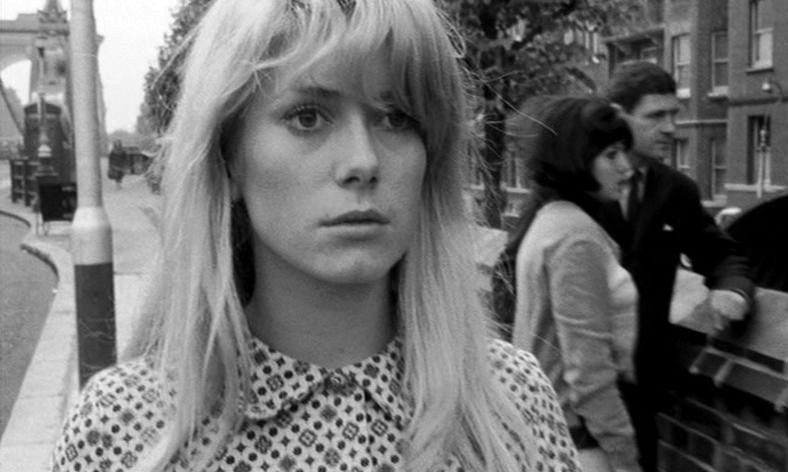
I can’t bear imagining them in bed | Catherine Deneuve, Repulsion, Roman Polanski
This points us to the question of ‘choice of symptom’ (see ISABELLE ADJANI ACTRESS 2: The Story of Adèle H.): Today Carole, rather than ‘choosing’ psychosis or schizophrenia in an attempt at self-cure, would probably choose anorexia. Indeed, in contemporary culture, anorexia is often the preferred means to deny the body and refuse sexuality.
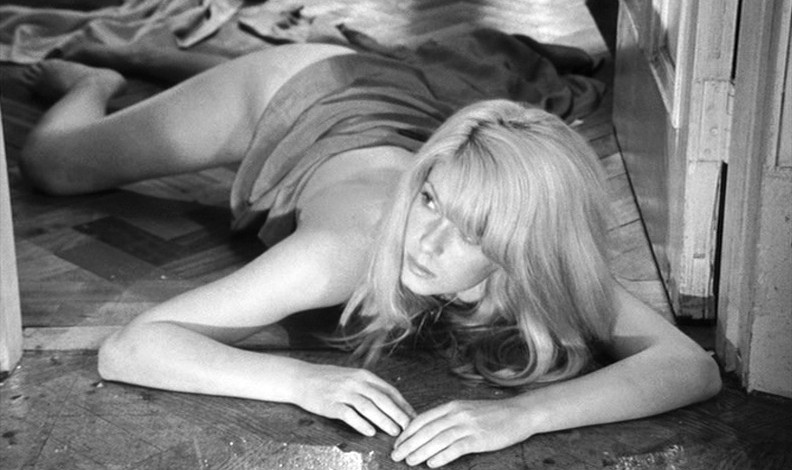
Catherine Deneuve, Repulsion, Roman Polanski
Polanski (in the Criterion DVD commentary) compares working with Deneuve to dancing a tango, with the actress following the director’s lead. Carole’s nervous tics (swiping her nose with her fingers, for example) came out of this ‘tango’, and prompted Polanski to say: ‘Catherine picked things up marvellously, she would suck up any acting proposition like a sponge. She would do it in such a natural way that when looking at it you’re sure that it’s just spontaneous, that she’s not aware of doing it’. To call that talent doesn’t get one very far, for only Deneuve’s availability, a function of her freedom, enabled her to lend herself so fully to Carole’s madness and incarnate it so effectively. ‘It was through those details that Polanski really put me in the scenes’, Deneuve adds. Yes, but once ‘put’ in a scene she had to ‘be’ there in a way that ‘an incalculable, unpredictable moment’ could arise, a moment that would foster ‘an increase of being’ (see CATHERINE DENEUVE ACTRESS 1: INTRODUCTION). If such moments are plentiful in Repulsion, it is largely because of Deneuve’s ability to so ‘be’.
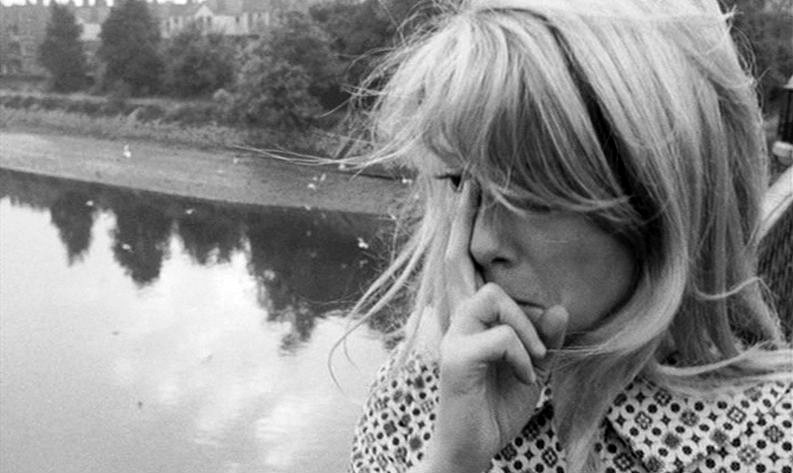
‘Out, damned spot’: not the guilt of murder, but the scent of sex
When it comes to sex, all of us have experienced longing and frustration, but where along the continuum of love and madness does desire tip into terror? Carole is courted in South Kensington by Colin, a handsome, affable young man with a sports car to boot.
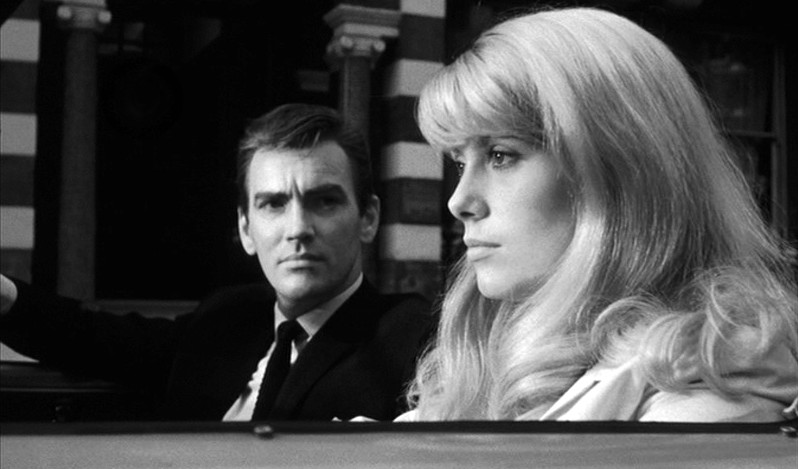
John Fraser & Catherine Deneuve, Repulsion, Roman Polanski
But Colin is not Carole’s type: she is only turned on by ‘masculine’ men, men who don’t wrap sex in love, men like her sister Helen’s married boyfriend, Michael, or better still, the workman in the street who calls out to her: ‘Hello, darling. How about a bit of the other, then?’.
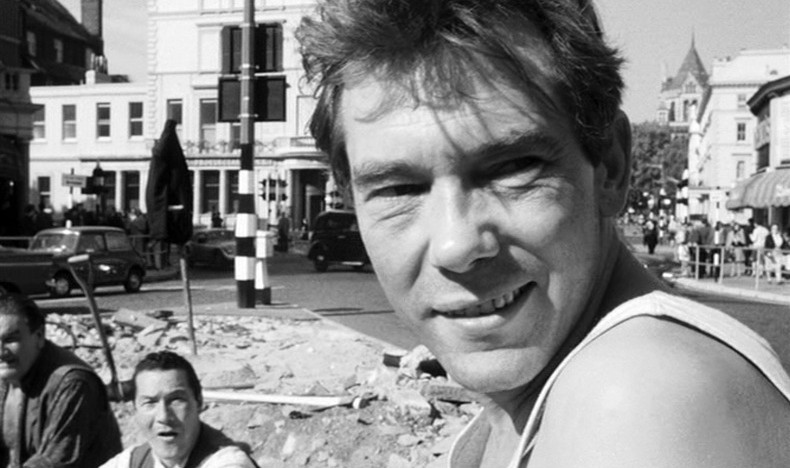
‘Hello, darling. How about a bit of the other, then?’ | Michael Pratt, Repulsion, Roman Polanski
Alone in her flat Carole has recurring hallucinations, fantasies in which she imagines the workman raping her…

Michael Pratt & Catherine Deneuve, Repulsion, Roman Polanski
…but when Colin tries to steal a kiss, she rushes home to wipe it off her lips and brush her teeth…

John Fraser & Catherine Deneuve, Repulsion, Roman Polanski
…in front of the same mirror where, later, she will dreamily examine Michael’s cut-throat razor.
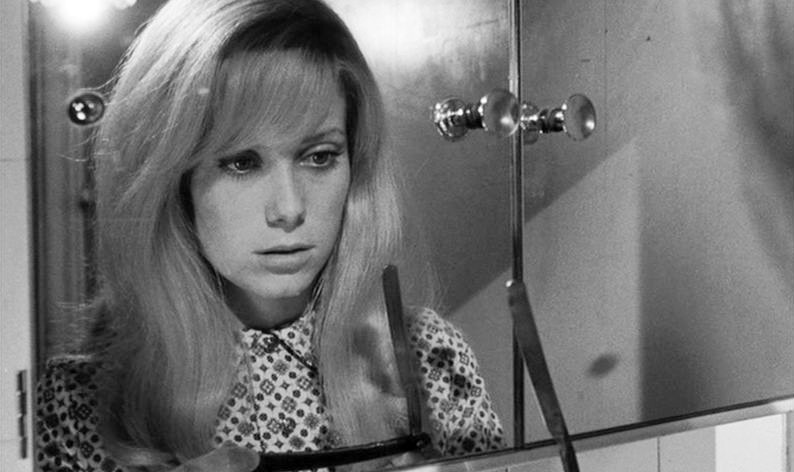
Catherine Deneuve, Repulsion, Roman Polanski
Every woman has experienced desire for a ‘savage’ lover over a ‘civilized’ one (like Belle de Jour in Buñuel’s film), and this deep-rooted dynamic, usually played out only in fantasy or sex-play (when not expressed in frigidity vis-à-vis the de-idealized partner), is another connection between Carole’s ‘deranged’ mind and the audience’s ‘normal’ one. As for acting the murder and rape scenes, this is what Deneuve had to say (Criterion commentary): ‘It’s never a job to do a rape scene, because it’s physical, it’s not a difficult thing to do because you have physical contact with someone, you’re not acting anymore… The killing and the physical scenes in the film were not the most difficult part for me. It’s like scenes where you have to shout or you have excessive things to do, in a way it helps you to act because you have to get into it and do it. It’s when it’s very subtle and you have to be really in the mood because you have nothing from outside to help you to go through it and to go to the peak of it, then you have to go down and go deep and take that from within yourself, but when you have to express things, once you are warmed up, and you rehearse and you work, you get into the scene.’ Deneuve’s assertion about acting, then, parallels the music truism that it’s easier to play a bravura piece than to play a slow piece well.
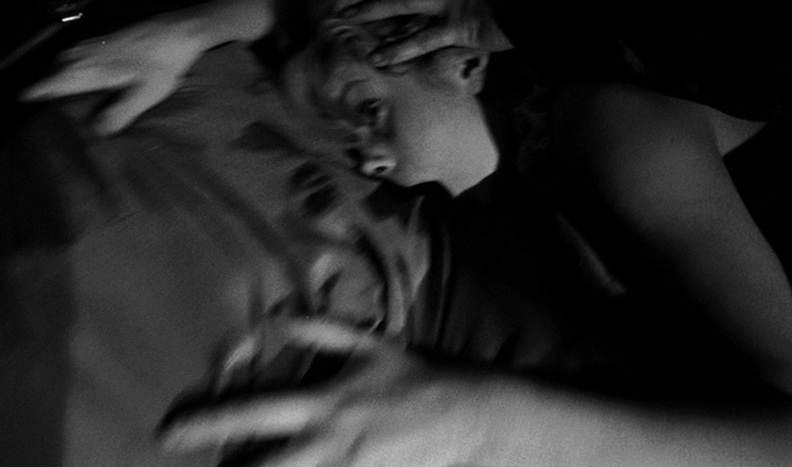
Catherine Deneuve, Repulsion, Roman Polanski
‘Schizoids destroy themselves by protecting themselves too much’ (Avodah Offit, The Sexual Self, p. 92): This is an argument one can make about Carole. Deneuve, understanding the multi-dimensionality of the role, said (in the Criterion DVD commentary): ‘Carol finally feels safe in a nest and she’s in those arms where she would have liked to be. She’s not safe for herself but she at least feels protected. That’s the image I have, of Carole being in the arms of her boyfriend. Attraction and repulsion are completely mixed together, but I suppose she has to be in that physical state to accept that she can be in his arms. She has to go through all that, it couldn’t happen another way.’
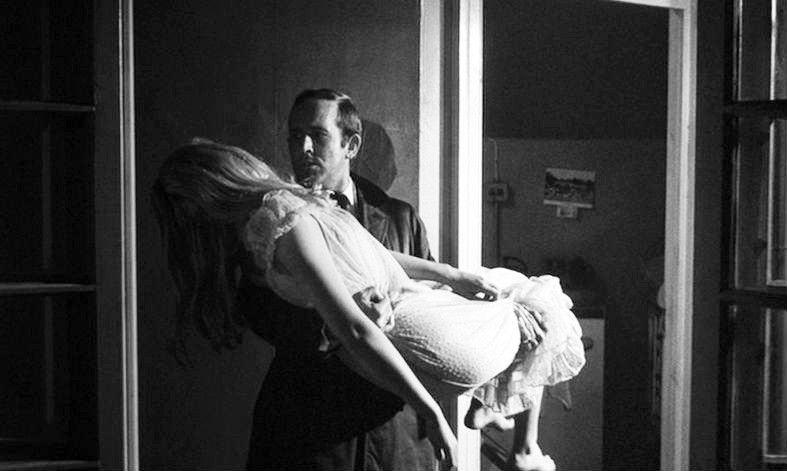
Catherine Deneuve and Ian Hendry, Repulsion, Roman Polanski
This is a profound insight, and it testifies to Deneuve’s intelligence and lucidity. It must have helped her trace the arc of Carole’s descent into madness while never losing sight of her humanity. Even if she understood that Carole’s fear of sex is pathological, she suspended that view, as it were, in order to play her as a real woman and not as a ‘case’: ‘I think Carole is a very normal person that you have to identify with. It’s very disturbing, because Carole is not someone so peculiar that you see her as a case, she’s someone you feel very close to’ (Deneuve, Criterion DVD commentary).
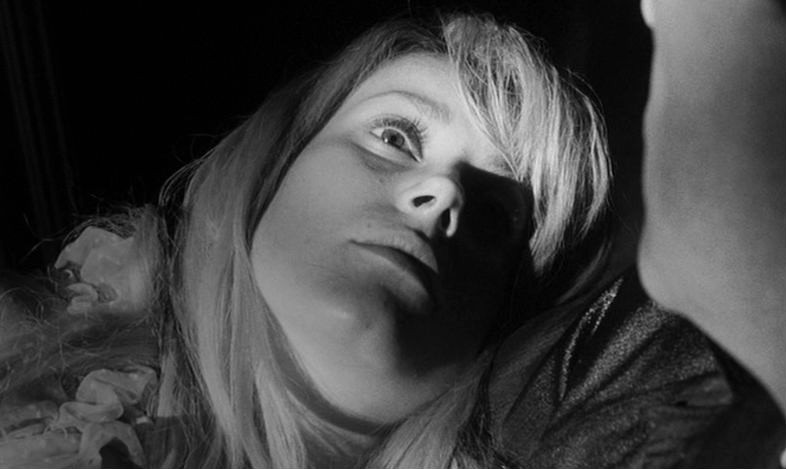
Catherine Deneuve: ‘She has to be in that physical state to accept that she can be in his arms’.
Today, Deneuve still speaks very highly of Repulsion and Polanski. As a young actress with no formal training, she learned important elements of her craft from him. Besides specific principles such as the importance of gestural precision, there was the more general principle of surprise. As Polanski put it (Criterion commentary): ‘What makes acting interesting is when the reaction is authentic, real, and yet original, not what you actually anticipate as a reaction. For example, when Helen comes into Carole’s bedroom and reproaches her, usually Carole would turn and answer something or react while looking at Helen, but she reacts here like a child, by just ignoring her question. It makes it more interesting.’
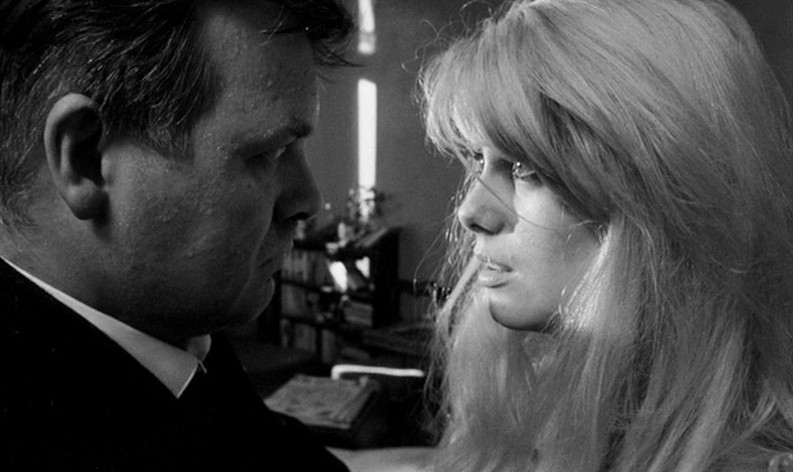
Catherine Deneuve and Patrick Wymark, Repulsion, Roman Polanski
This prompts the question, of course, of the relative weight of the contributions from writer, director and actress. While everyone agrees that it’s the director who calls the shots, the fact remains that it’s the actress who incarnates them: her screen ‘presence’ is vital. And it is in this regard that Deneuve’s ‘nihilism of beauty’ (see CATHERINE DENEUVE ACTRESS 1: INTRODUCTION) comes into play: By the quality of her ‘presence’, she incarnates in Carole a beauty that inspires desire and the quest for transcendence, even as it transforms that quest into a desire for transgression. This, I would argue, is a key feature of Deneuve’s singularity, and accounts for much of what makes her great in Repulsion.
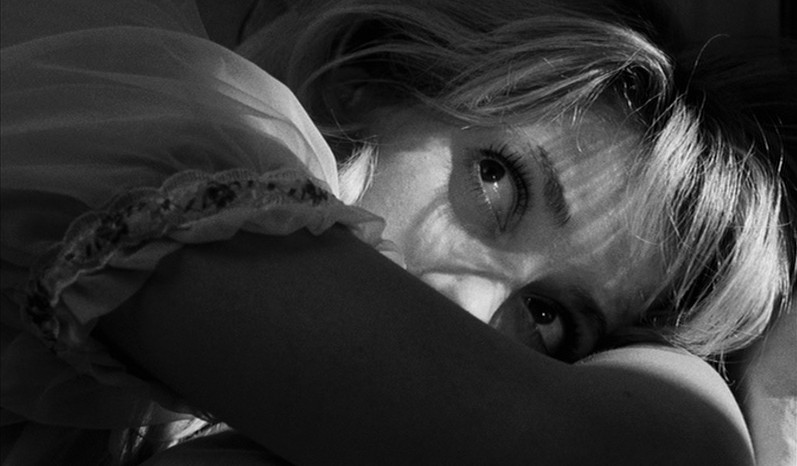
Catherine Deneuve, Repulsion, Roman Polanski
MARA, MARIETTA: A LOVE STORY IN 77 BEDROOMS
A literary novel by Richard Jonathan
THE RETURN OF THE REPRESSED IN FOUR IMAGES FROM ‘REPULSION’
A Note on Feminine Sexuality
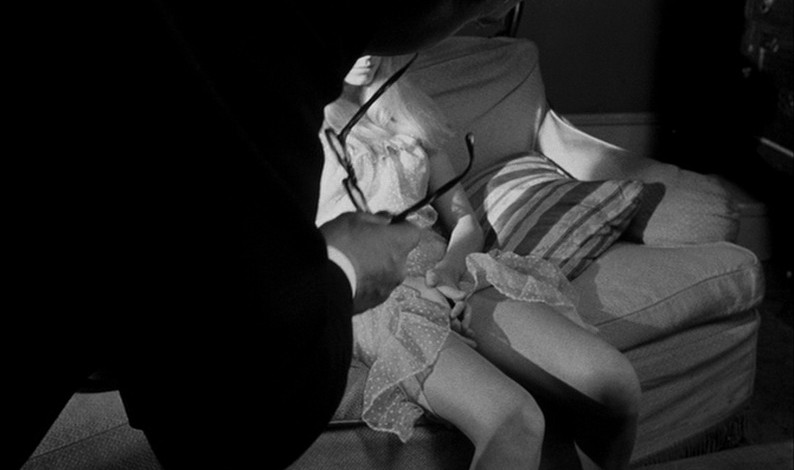
Catherine Deneuve and Patrick Wymark, Repulsion, Roman Polanski
I accompany these images with short excerpts I’ve translated from ‘La Frigidité, ou la Belle au bois dormant’ (‘Frigidity, or the Sleeping Beauty’), a paper by Danielle Bastien*, one of the finest contemporary psychoanalysts specializing in sexuality and the couple. Extracted from their context of theoretical discussion, these brief excerpts appear very ‘basic’. So, for readers who’d like to gain a deeper understanding of the subject, I heartily recommend the book by Jacqueline Schaeffer (on whose theory Danielle Bastien draws heavily), The Universal Refusal: A Psychoanalytic Exploration of the Feminine Sphere and its Repudiation (tr. David Alcorn, Routledge, 2011). Schaeffer’s thesis is, in my view, the single most rewarding one, when it comes to feminine sexuality, in all of psychoanalysis. It is profound, but it can be stated simply: There is a conflict in woman—and the feminine dimension itself is rooted in it—between a sexuality that demands ‘defeat’ and an ego that abhors this. For readers with a taste for literature, my novel, Mara, Marietta: A Love Story in 77 Bedrooms, gives full artistic expression to this radical insight.
* Danielle BASTIEN, « La frigidité ou la belle au bois dormant », in Cahier de psychologie clinique N° 15 Le féminin, Bruxelles, De Boeck, 2000.
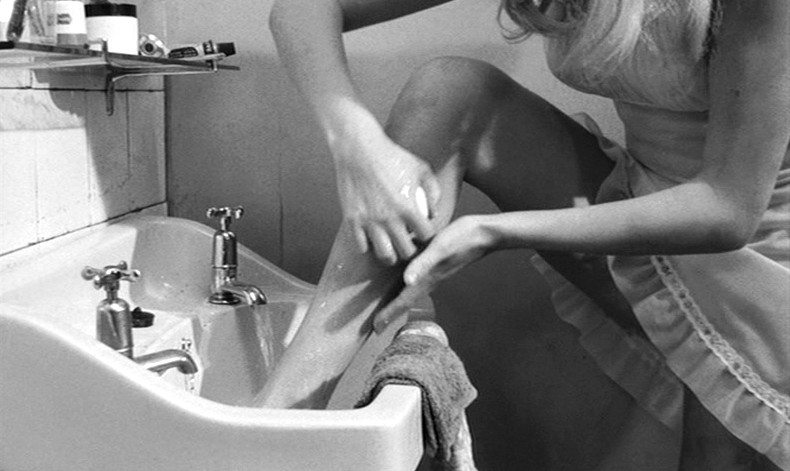
Carole cleaning her dirty thoughts | Catherine Deneuve, Repulsion, Roman Polanski
Frigidity is a symptom in the psychoanalytic sense of the term: A subjective phenomenon that constitutes for psychoanalysis not the sign of a sickness, but the expression of an unconscious conflict.
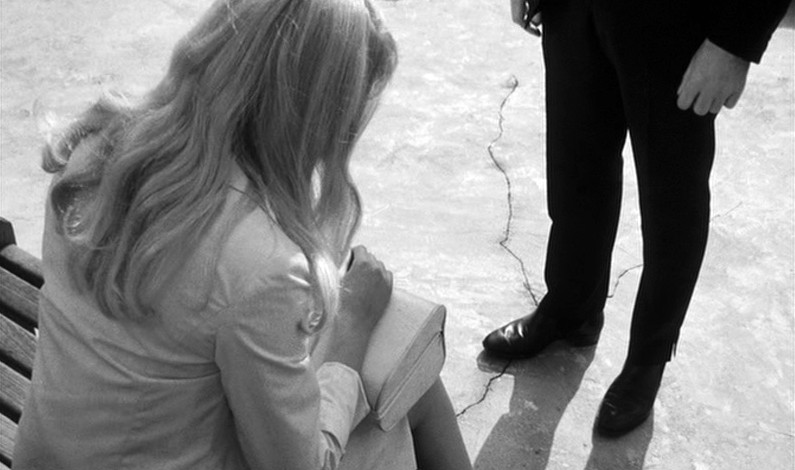
Catherine Deneuve and John Fraser, Repulsion, Roman Polanski
Frigid women often have rape fantasies, fantasies of ‘breaking and entering’, of violent intrusion.
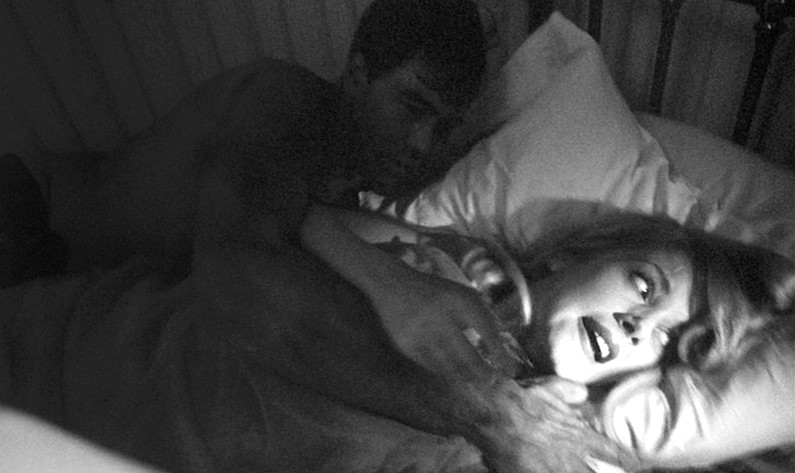
Catherine Deneuve and Mike Pratt, Repulsion, Roman Polanski
An understanding of the feminine—of its refusal, its jouissance and its frigidity—can only be obtained by considering erotic masochism in conjunction with fantasy and anxiety. Erotic masochism has nothing to do with classic sado-masochism; instead, it is part and parcel of feminine jouissance.
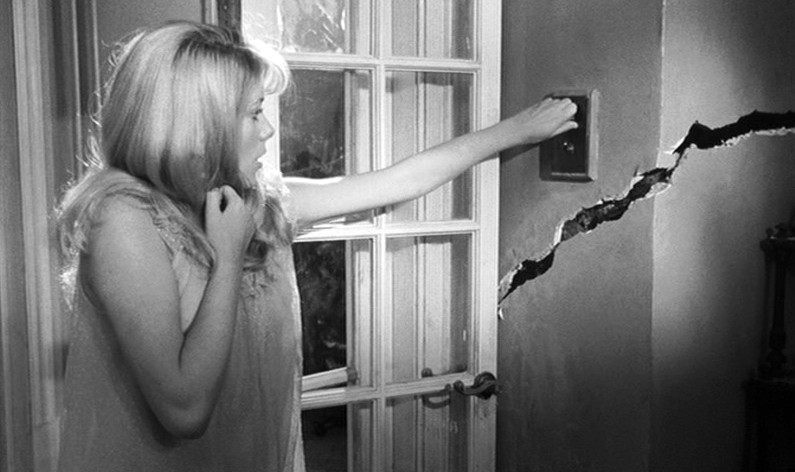
Catherine Deneuve, Repulsion, Roman Polanski
Frigid women constantly oscillate between questioning the very existence of the jouissance they seek and the fear of finding it if they persist in looking for it. Their fear manifests itself in a double movement: first, terror of becoming mad, of losing their mind, if they attain jouissance; second, episodes of depression that interrupt—and thus mask and provide protection from—the fear of finding that sought-after jouissance.
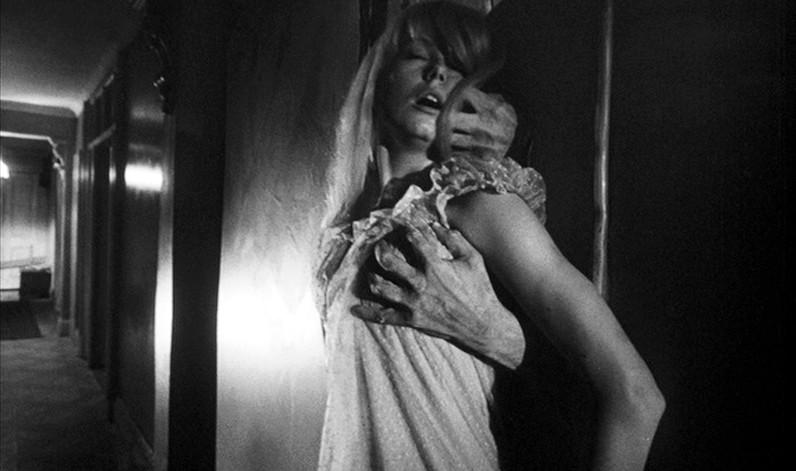
Catherine Deneuve, Repulsion, Roman Polanski
REPULSION & BABY DOLL
Elia Kazan’s ‘Baby Doll’ as a Companion Piece to Polanski’s ‘Repulsion’
In the audio commentary on the Criterion DVD of Repulsion, Catherine Deneuve says, ‘Baby Doll is a film I very often think of when I think of Repulsion, because of the childishness of the character. I love that film’.
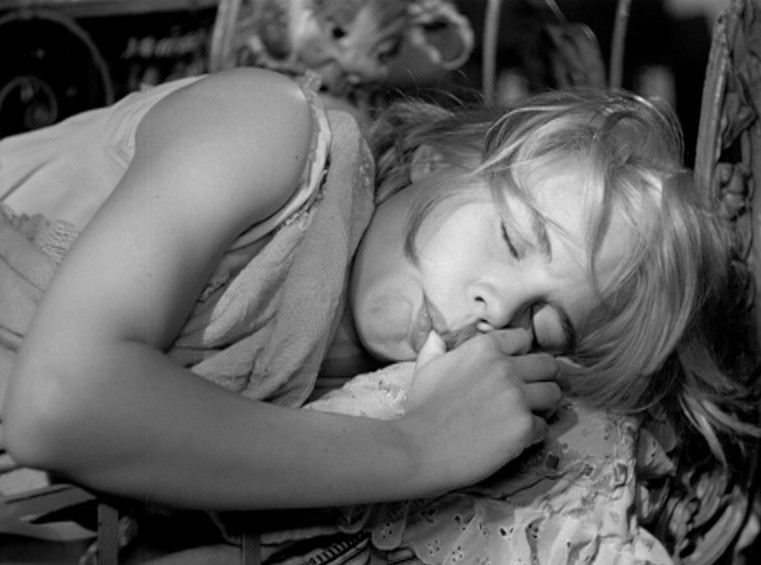
Carroll Baker, Baby Doll, Elia Kazan
In my view, Baby Doll is simply one of the finest films ever made, a black comedy, Southern Gothic (screenplay by Tennessee Williams), that pulls off the feat of sustaining, with the lightest of touches, a dark eroticism. Like all true art, it is organic, meaning its style and substance are one. Indeed, a dimension of eroticism is charm (magic, fascination, enchantment) and Baby Doll has an abundance of it: Kazan’s direction, unfailingly cinematic, and the cast’s acting, uniformly excellent, concur to generate a sex appeal—in rural Mississippi!—that evokes the ‘unbearable lightness of being’.
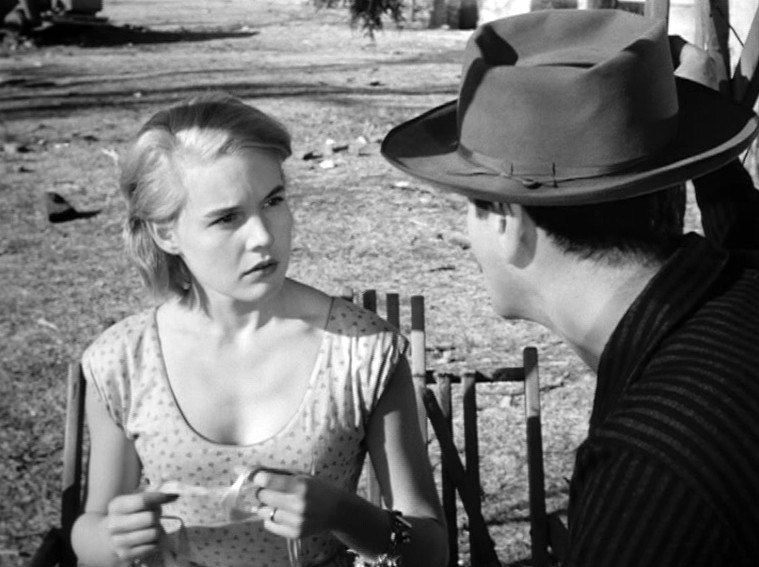
Carroll Baker & Eli Wallach, Baby Doll, Elia Kazan
Despite striking an entirely different tone—the two films operate in very different registers—Baby Doll can fruitfully be considered a companion piece to Repulsion. ‘Oblique parallels’ can be drawn between them, the most obvious being that between the two heroines. In recognition of this—and in honour of Catherine Deneuve’s love of Baby Doll—I offer these images from the film, accompanied by brief extracts from Tennessee Williams’ screenplay (Baby Doll & Tiger Tail: A screenplay and play by Tennessee Williams. New Directions. Kindle Edition 2020).
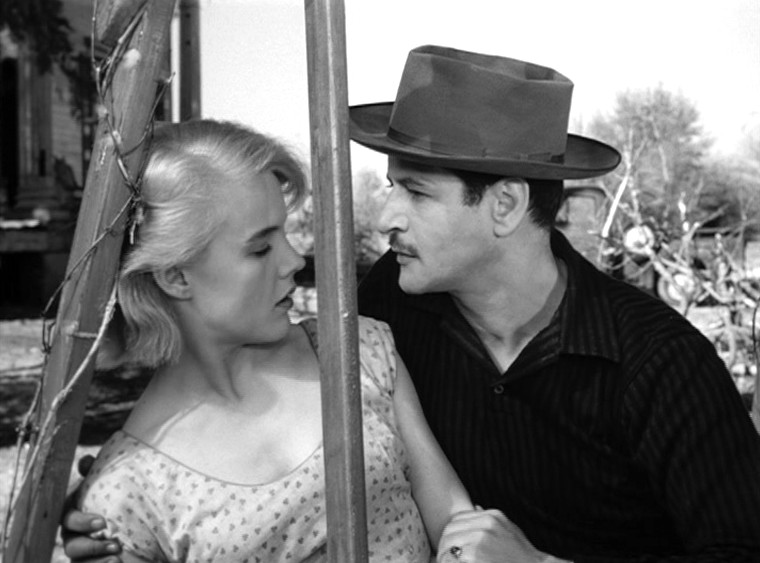
Carroll Baker (Baby Doll) & Eli Wallach (Silva Vacarro), Baby Doll, Elia Kazan
SILVA: There’s a lot of fine cotton lint floating around in the air.
BABY DOLL: I know there is. It irritates my sinus.
SILVA: Well, you’re a delicate woman.
BABY DOLL: Delicate? Me? Oh no. I’m a good-size woman.
SILVA: There’s a lot of you, but every bit of you is delicate. Choice. Delectable, I might say.
BABY DOLL: Huh?
SILVA: You’re fine fibered. Soft. Smooth.
BABY DOLL: Mr. Vacarro, our conversation certainly is taking a personal turn!
SILVA: Yes. You make me think of cotton. No! No fabric, no kind of cloth—not even satin or silk cloth—no kind of fiber, not even cotton fiber, has the absolute delicacy of your skin.
BABY DOLL: Well! Should I say thanks or something?
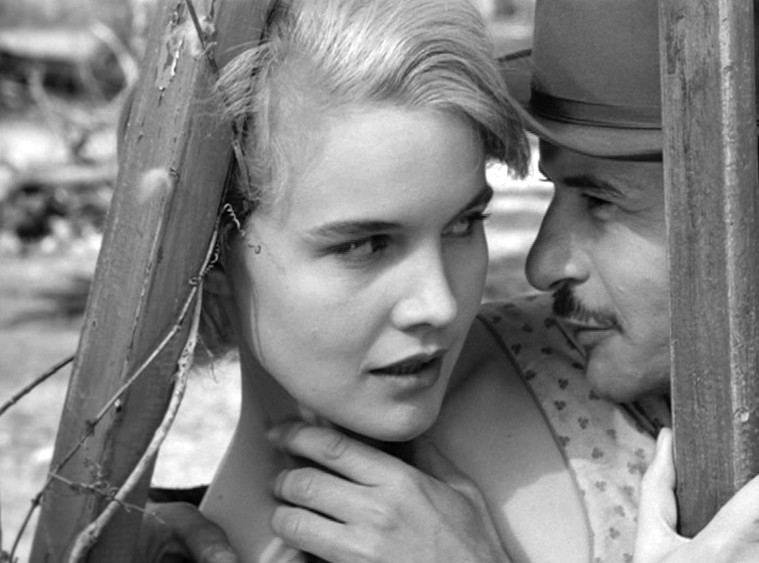
Carroll Baker & Eli Wallach, Baby Doll, Elia Kazan
BABY DOLL: This isn’t fun.
SILVA: Then why do you giggle?
BABY DOLL: I’m ticklish.
SILVA: Ticklish!
BABY DOLL: Yes, quit switching me, will you?
SILVA: I’m just shooing the flies off
BABY DOLL: They don’t hurt nothing. And would you mind moving your arm?
SILVA: Don’t be so skittish!
BABY DOLL: All right. I’ll get up then.
SILVA: Go on.
BABY DOLL [trying]: I feel so weak. [She pulls herself away from him.] Oh! My head’s so buzzy.
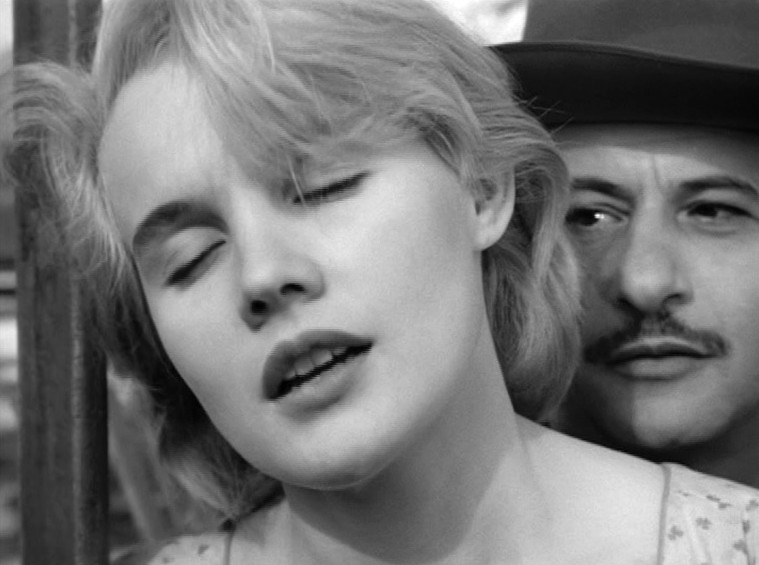
Carroll Baker & Eli Wallach, Baby Doll, Elia Kazan
SILVA: Fuzzy?
BABY DOLL: Fuzzy and buzzy.
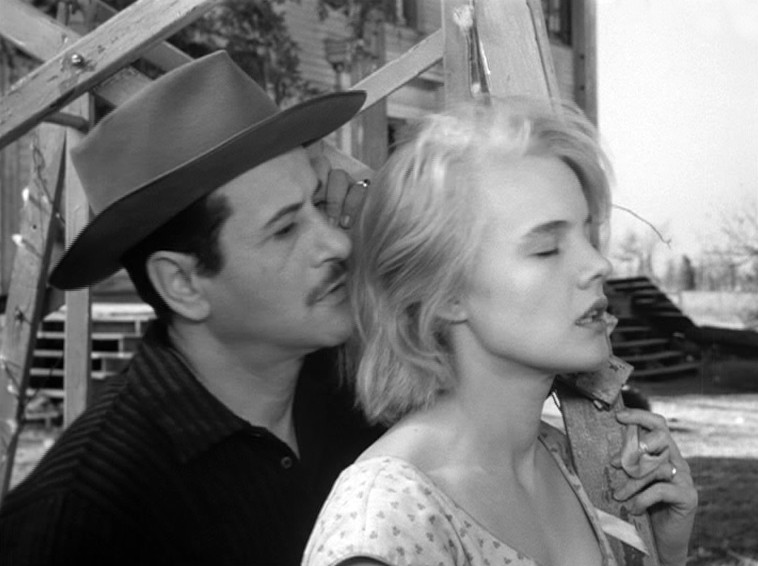
Carroll Baker & Eli Wallach, Baby Doll, Elia Kazan
BABY DOLL: My head’s swinging around. Must be all that swinging…
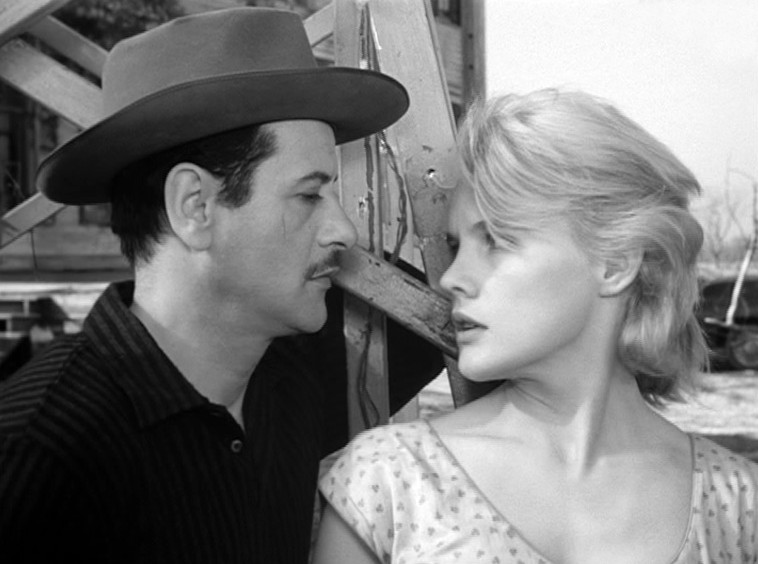
Carroll Baker & Eli Wallach, Baby Doll, Elia Kazan
FILM ACTRESSES & GLOBAL CLASSICS IN THE MARA MARIETTA CULTURE BLOG
CLICK OR TAP ON THE IMAGE TO GO TO THE CORRESPONDING PAGE
By Richard Jonathan | © Mara Marietta Culture Blog, 2020 | All rights reserved

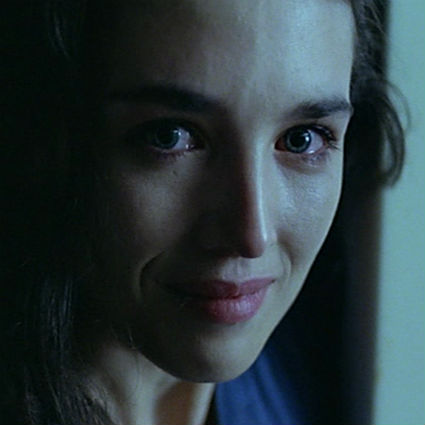
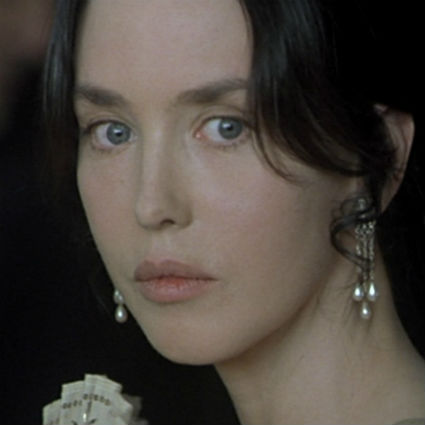
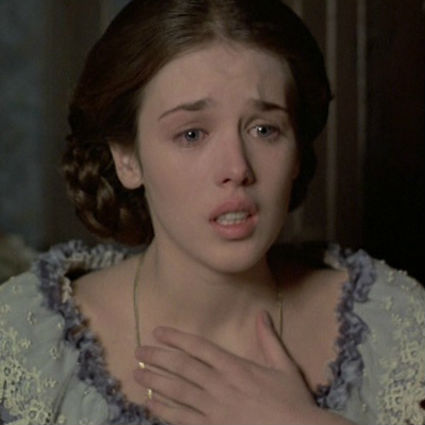
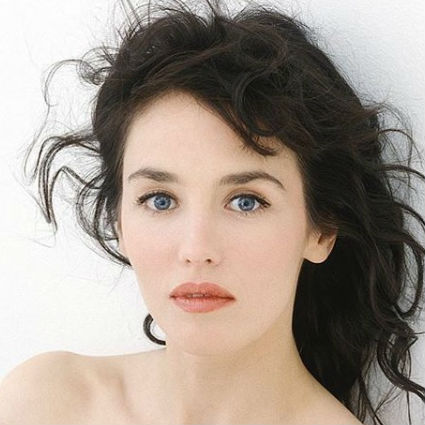
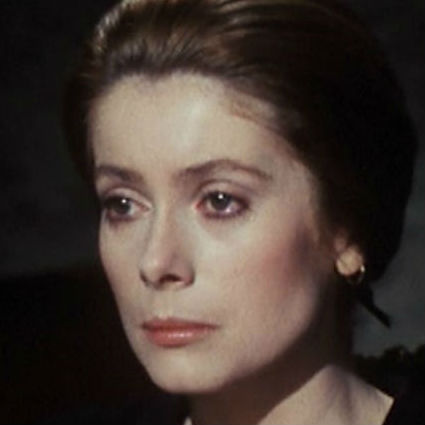
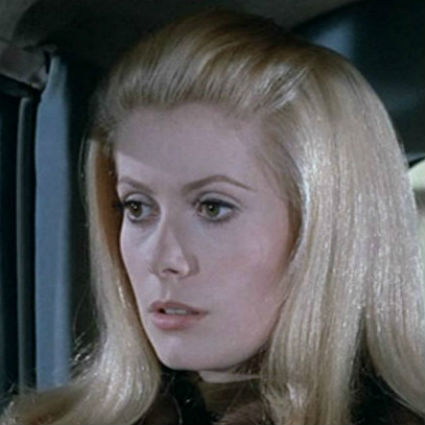
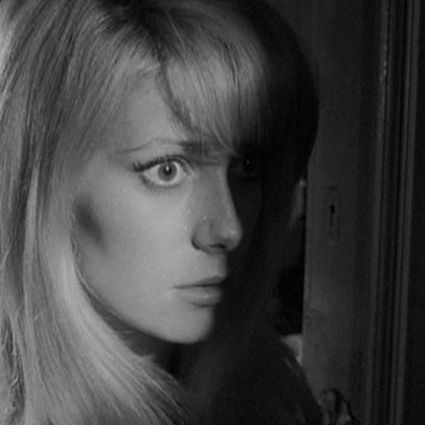
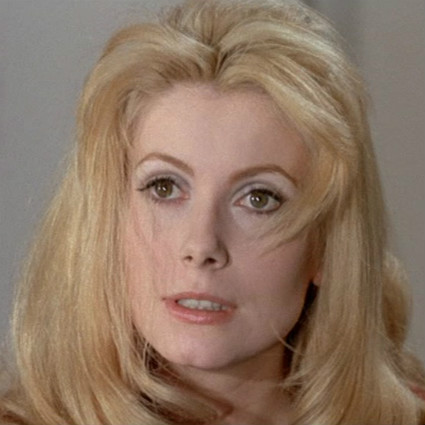
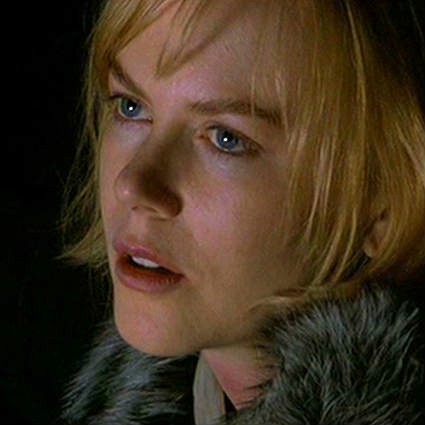
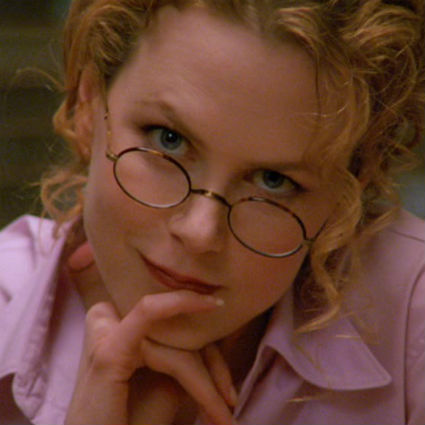
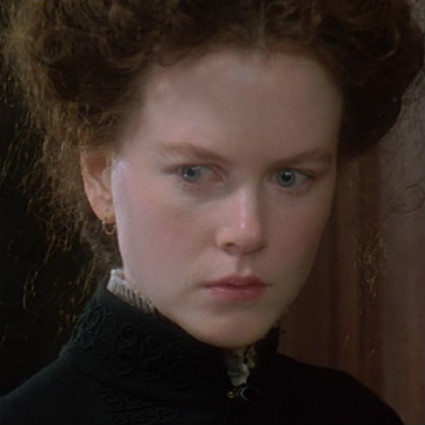
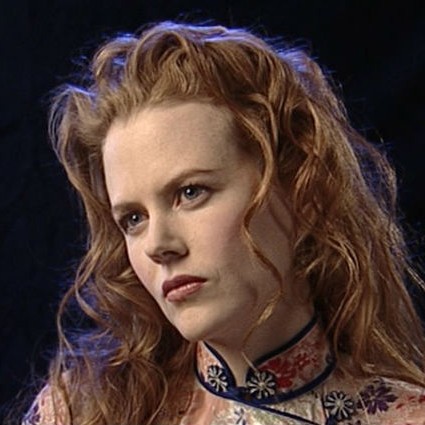
Comments